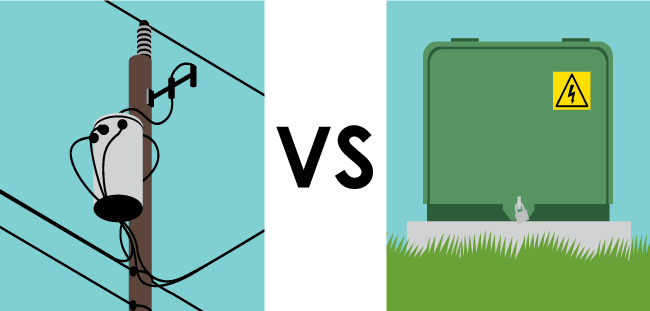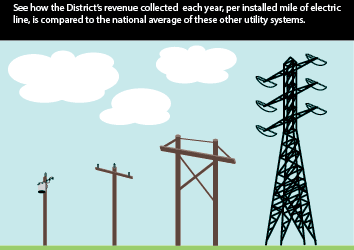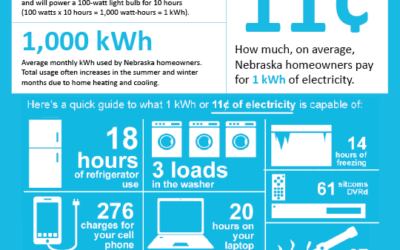
Jeremy Kaiser
Manager of Operations

At Dawson PPD, we’re constantly working to improve our system and bring you reliable electricity. Part of that involves deciding between overhead and underground power lines. You might be curious about the pros and cons of each, so let’s break it down.
The Cost Factor
Until recently, underground lines were much more expensive to build. Since 2020, the cost gap has narrowed. This means we consider both options when planning new lines or upgrades, when previously we looked into underground if it was specifically requested or was the only option to successfully connect power.
Finding the Right Fit
Several factors influence our choice. We consider things like the number of customers affected, the type of land, and how long the existing lines have been around. Sometimes, the best solution combines both overhead and underground lines. For example, on a sharp curve in the road, building an overhead line might require many support poles. In such cases, burying the line under the curve might be more cost-effective.
Looks vs. Time
Underground lines are certainly more pleasing to the eye – no poles and wires cluttering the view. However, there’s a trade-off. When there’s a power outage with underground lines, it takes longer to find the problem. We can’t simply drive by and spot the issue. Instead, we need to isolate sections of the line and then pinpoint the exact location of the fault. This might even involve digging in your yard, depending on where the easement is located. We always try our best to minimize any damage during repairs, but sometimes it’s unavoidable.
The Boring Solution (Literally!)
Fortunately, Dawson PPD has invested in a boring machine to make underground lines even more affordable in the long-term. This allows us to install underground lines efficiently with minimal digging, which means less disruption to your property and reduces the risk of future problems like washouts from heavy rain.
The Bottom Line
We understand you want reliable power and an attractive view. By considering all the factors – cost, efficiency, and aesthetics – we can choose the best approach for each situation. We’re committed to keeping the lights on and delivering the best service possible.
OTHER NEWS
Careers in public power
Rural electric public power districts, like Dawson PPD, and co-ops are community-focused organizations that deliver safe, reliable and affordable energy to its customers. These utilities are unique because we belong to the community we serve, giving us better insight...
BETWEEN THE LINES: Public Power Month
By Gwen Kautz, General Manager gkautz at dawsonpower.com 308-324-2386 The folks at Dawson Public Power District work hard to keep the lights on and get them back on quickly when there are problems. There is another side of the business though, where we work equally...
WATT’S UP? A kilowatt-hour defined
1 kWh = 1,000 watt-hours 1 kilowatt-hour (kWh) of energy is equal to 1,000 watt-hours and will power and 100-watt light bulb for 10 hours (100 watts x 10 hours = 1,000 watt-hours = 1 kWh). 1,000 kWh The average monthly kWh used by Nebraska homeowners. Total usage...



